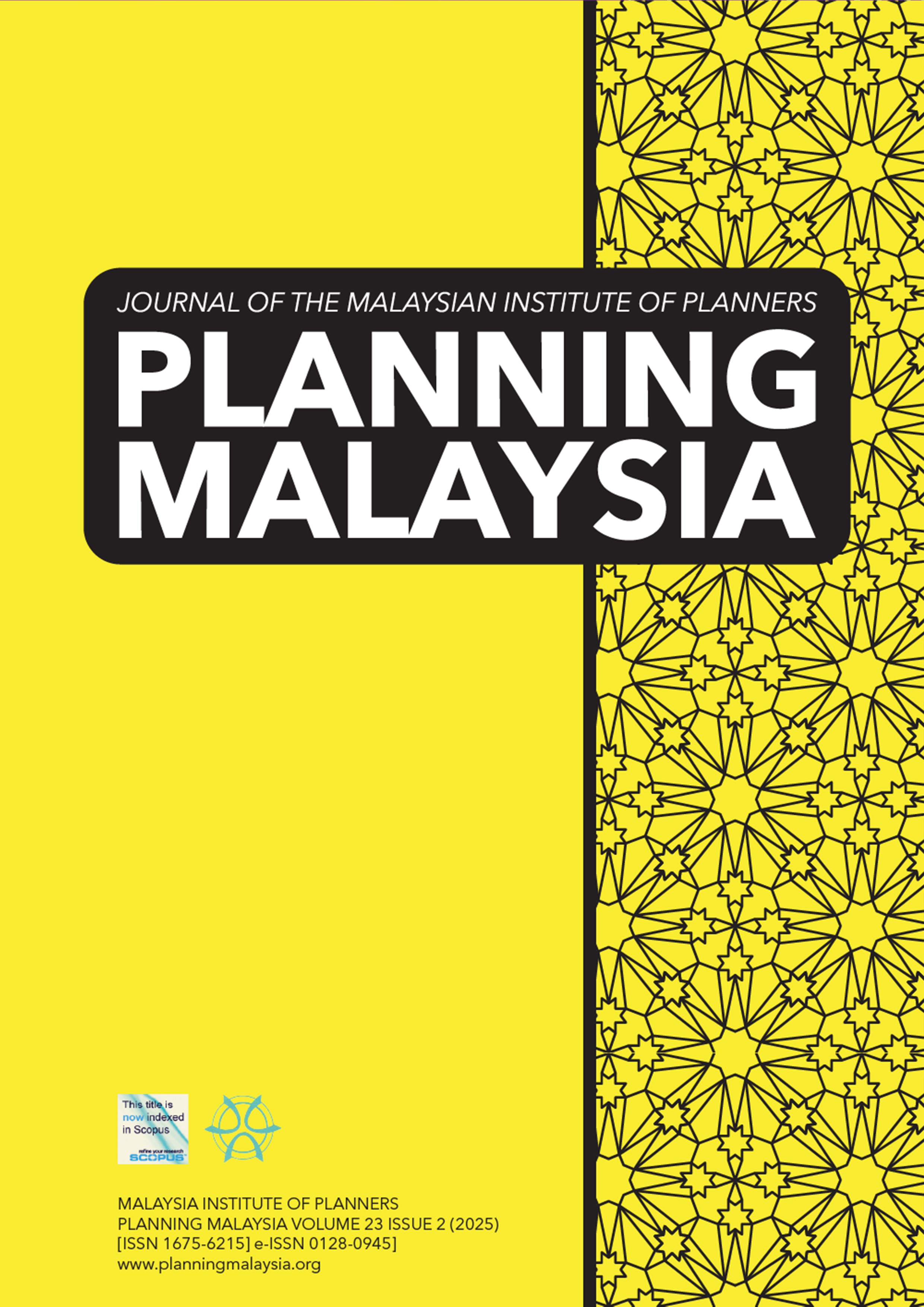THE IMPACT OF LANDSCAPE NARRATIVE FEATURES IN CHINESE URBAN HERITAGE PARKS ON VISITOR SATISFACTION IN FUYONG CITY, ANHUI PROVINCE, CHINA
DOI:
https://doi.org/10.21837/pm.v23i36.1719Keywords:
urban heritage parks, landscape narrative features, visitors’ satisfaction, sustainable tourismAbstract
In recent years, the number of Chinese visitors in urban heritage parks has been growing, fuelling the rapid development of the heritage site tourism sector. This study explores how landscape narrative features influence visitors’ satisfaction in urban heritage parks to bridge the gap between theoretical and practical research in this field. Taking the visitors of Yingzhou West Lake in Fuyang City, Anhui Province, China, as the research object, a questionnaire survey was used to collect data, verify the influence of landscape narrative features on visitors’ satisfaction, and analyse its mechanism of action. The study constructed a mechanism model of landscape narrative features affecting visitors’ satisfaction and classified the features into three dimensions: physical space, narrative space, and heritage space. The results show that such features significantly positively affect visitors’ satisfaction, and enhancing landscape narrative features can effectively improve visitors’ satisfaction. This study provides important theoretical support for sustainable tourism development in urban heritage parks and proposes practical ideas for tourism management and design practices in heritage sites.
Downloads
References
AECOM. (2018). China Theme Park Pipeline Report. https://www.aecom.com/cn/wp-content/uploads/2018/11/chinathemeparkpipeline.pdf
Asmelash, A. G., & Kumar, S. (2019). The structural relationship between tourist satisfaction and sustainable heritage tourism development in Tigrai, Ethiopia. Heliyon, 5(3). DOI: https://doi.org/10.1016/j.heliyon.2019.e01335
Bischoff, I., & Meckl, J. (2008). Endowment effect theory, public goods and welfare. The Journal of Socio-Economics, 37(5), 1768-1774. DOI: https://doi.org/10.1016/j.socec.2007.12.008
Chew, S.-S., Zainol, R., & Goh, H. C. (2024). SATISFACTION OF INTERNATIONAL AND DOMESTIC TOURISTS IN MALAYSIA’S OLDEST NATIONAL PARK: TAMAN NEGARA PAHANG. PLANNING MALAYSIA, 22. DOI: https://doi.org/10.21837/pm.v22i33.1548
Davis, S. (2022). Stories from the Land: Revealing Plural Narratives within One Landscape. Landscape Review, 19(1).
Dzegede, A. Y. (2000). Historical and cultural narratives in landscape design: Design applications for Miami Beach, Florida. Massachusetts Institute of Technology.
Fan, B., Isa, M. I., & Mohamed, B. (2024). THE RELATIONSHIP BETWEEN TOURIST EXPERIENCE, PLACE ATTACHMENT, AND POST-VISIT INTENTIONS: AN APPLICATION OF SOR PARADIGM IN THE CONTEXT OF HANGZHOU, CHINA. PLANNING MALAYSIA, 22. DOI: https://doi.org/10.21837/pm.v22i34.1580
Feng, D., Chiou, S.-c., & Wang, F. (2021). On the Sustainability of Local Cultural Heritage Based on the Landscape Narrative: A Case Study of Historic Site of Qing Yan Yuan, China. Sustainability, 13(5), 2831. DOI: https://doi.org/10.3390/su13052831
Garnier, I. (2015). Establishing a Framework for Landscape Narrative Exploration Within Seattle's Pioneer Square Historic District.
Gidey, Y., & Sharma, K. (2017). Tourists satisfaction in tourist destination (A study of Tigray-Ethiopia). International Journal of Research in Finance and Marketing, 7(4), 138-151.
Hadiullina, G., Nugumanova, L., Bagautdinova, N., & Averiyanov, B. (2013). External effects and methods of their neutralization in the contemporary Russian economy. World Applied Sciences Journal, 27(13), 107-110.
Huete-Alcocer, N., López-Ruiz, V. R., & Grigorescu, A. (2019). Measurement of satisfaction in sustainable tourism: A cultural heritage site in Spain. Sustainability, 11(23), 6774. DOI: https://doi.org/10.3390/su11236774
Huang, Z., & Yao, N. (2023). A Study on Network Structure and Influence Characteristics of the Landscape Elements of Tang Poetr. DOI: https://doi.org/10.21203/rs.3.rs-2510032/v1
Huh, J. (2002). Tourist satisfaction with cultural/heritage sites: The Virginia Historic Triangle. Virginia Tech.
Jiang, J. (2021). Artistic Conception of Chinese Classical Gardens. Journal of Landscape Research, 13(5), 87-92.
Kim, M., & Thapa, B. (2018). Perceived value and flow experience: Application in a nature-based tourism context. Journal of Destination Marketing & Management, 8, 373-384. DOI: https://doi.org/10.1016/j.jdmm.2017.08.002
Li, T. (2020). A Brief Analysis of the Construction of Private Gardens in Suzhou under the Theory of Spatial Narratology. In Journal of Physics: Conference Series. DOI: https://doi.org/10.1088/1742-6596/1673/1/012071
Lin, Y. (2023). Spatiotemporal narrative structure of the lingering garden based on traditional Chinese conception of time and space. Landscape research, 48(1), 45-63. DOI: https://doi.org/10.1080/01426397.2022.2139820
López Guzmán, T., Pérez Gálvez, J. C., & Muñoz-Fernández, G. A. (2018). Satisfaction, motivation, loyalty and segmentation of tourists in World Heritage cities.
Medina-Viruel, M. J., López-Guzmán, T., Gálvez, J. C. P., & Jara-Alba, C. (2019). Emotional perception and tourist satisfaction in world heritage cities: The Renaissance monumental site of úbeda and baeza, Spain. Journal of Outdoor Recreation and Tourism, 27, 100226. DOI: https://doi.org/10.1016/j.jort.2019.100226
Niglio, O. (2014). Inheritance and identity of Cultural Heritage. Advances in Literary Study, 2(1), 1-4. DOI: https://doi.org/10.4236/als.2014.21001
Popescu, L., Nita, A., & Iordache, C. (2020). Place identity, urban tourism and heritage interpretation: A case study of Craiova, Romania. Journal of Balkan and Near Eastern Studies, 22(4), 494-505. DOI: https://doi.org/10.1080/19448953.2020.1775401
Potteiger, M., & Purinton, J. (1998). Landscape narratives: Design practices for telling stories. John Wiley & Sons.
Tao, J., & Rodloytuk, P. (2023). Landscape Narratives of the Garden in Central Guangdong-The Case Study of the Keyuan Garden in the Qing Dynasty. Journal of Namibian Studies: History Politics Culture, 33, 3106-3118. DOI: https://doi.org/10.59670/jns.v33i.943
Valois, N., & Paradis, J. (2010). Place Émilie-Gamelin in Montréal–landscape narrative, meaning and the uses of public space. Journal of Landscape architecture, 5(2), 72-83. DOI: https://doi.org/10.1080/18626033.2010.9723440
Wang, T. (2022). History of Chinese Classical Gardens: Taking the Mature Gardens of The Song Dynasty as An Example. International Journal of Education and Humanities, 4(3), 235-237. DOI: https://doi.org/10.54097/ijeh.v4i3.1814
Wiwattanakantanga, P., & To-ima, J. (2014). Tourist satisfaction on sustainable tourism development, amphawa floating MarketSamut songkhram, Thailand. In ENRIC2014) The 1st Environment and Natural Resources International Conference 6.
Yu, k., Li, D., & Ji, Q.-p. (2001). Ecological Design for Landscape and City: Concepts and Principles [J]. JOURNAL OF CHINESE LANDSCAPE ARCHITECTURE, 6.
Zhuang, Q., & Chen, S. (2022). Sentiment Analysis of Cultural Heritage Landscape Elements Using Big Data of Online Comments: A Case Study of the Humble Administrator’s Garden in China. In 2022 3rd International Conference on Big Data and Informatization Education (ICBDIE 2022). DOI: https://doi.org/10.2991/978-94-6463-034-3_7
Downloads
Published
How to Cite
Issue
Section
License

This work is licensed under a Creative Commons Attribution-NonCommercial-NoDerivatives 3.0 Unported License.
Copyright & Creative Commons Licence
eISSN: 0128-0945 © Year. The Authors. Published for Malaysia Institute of Planners. This is an open-access article under the CC BY-NC-ND license.
The authors hold the copyright without restrictions and also retain publishing rights without restrictions.


